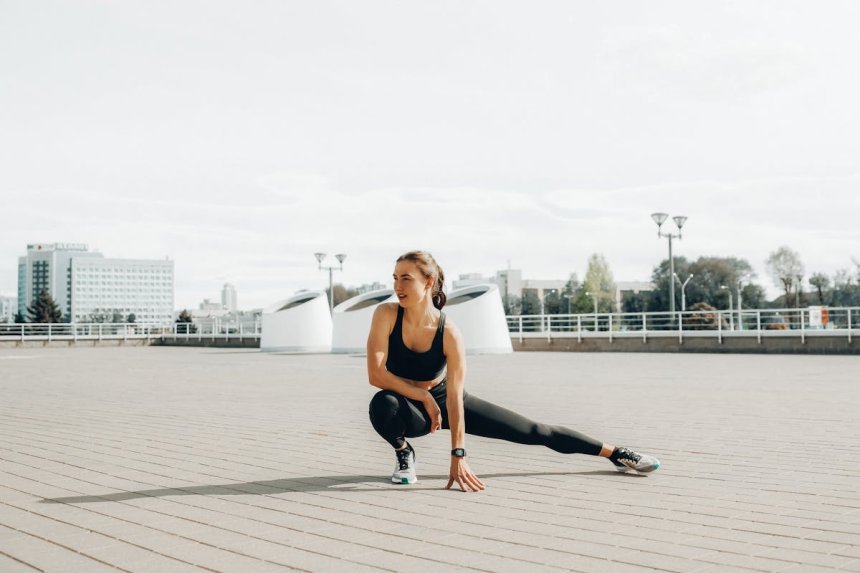Physical assessment at the gym: how it is done and its importance
Physical assessment is essential for athletes to begin their training plan without any fear, and it is through the measurements and tests performed in this assessment that information regarding possible illnesses and dysfunctions in basic movement patterns is identified.

Physical assessment is essential for athletes to begin their training plan without any fear, and it is through the measurements and tests performed in this assessment that information regarding possible illnesses and dysfunctions in basic movement patterns is identified.
Furthermore, it is carried out by the trainer/professional with the aim of understanding the athlete's body system and creating a personalized workout, whether for health or aesthetic purposes.
Please note that the process can be carried out by other health professionals, in addition to the physical trainer, such as nutritionists, nutritionists and doctors.
What is a physical assessment?
Physical assessment is a procedure that aims to measure, understand and identify the physical conditioning level of the future athlete.
The analysis of information makes it possible to create appropriate training, respecting the student's physical and biological limits.
It is through these exams that the coach begins to understand the athlete's limitations, avoiding the risk of injuries caused by excess weight or intensity.
This evaluation process also identifies possible illnesses, preventing crises and other more serious problems during exercise, such as heart attacks and strokes.
They also determine the amount of body fat and lean mass, helping to define goals and choose the right activities.
How is physical assessment performed?
Most assessments consist of the following exams: anamnesis, postural, anthropometric, nutritional and cardiorespiratory assessment, but they can also be performed and combined in a personalized manner, according to the needs of the athlete and the professional.
Learn about some of the most common procedures:
1. Postural assessment
Postural deviations, when discovered in time, can be alleviated with certain stretches and physical activities.
It is with this test that the professional can identify deviations, such as: lordosis, scoliosis, kyphosis and varus and valgus knees.
2. Anamnesis
It is in this exam that basic information is collected in order to provide a summary of who the athlete is and their history, thus, it is possible to have the following data:
- what emotional factors the athlete is experiencing: anxiety , disorders or depression, for example;
- surgeries performed;
- experience/history of physical activities;
- general habits, involving sleep routine, quality of life and working hours; and
- possible injuries that left after-effects that could make exercise difficult.
3. Nutritional
The goal is to help athletes with their calorie deficits and better understand which vitamins, minerals and the ideal amount of calories they should consume daily.
This way, results can be achieved within the stipulated time frame, without harming the athlete's health.
4. Anthropometric assessment
Data related to body composition is collected in this test which determines:
- amount of muscle mass ;
- BMI - body mass index;
- weight;
- height; and
- fat percentage.
5. Cardiorespiratory
The test is carried out on a bench, rising and falling at a certain frequency and the aim is to discover the amount of oxygen that the body consumes to carry out the activity.
The trainer may increase the intensity of the exercise in order to discover the maximum capacity of the heart and respiratory system to deliver sufficient oxygen to the muscles being used to perform the activity. The test also discovers the capacity of these muscles to use oxygen adequately to perform the test.
After understanding what this assessment is and how it can be performed, it is time to definitively understand what it is for and who can perform this procedure. Check it out!
What is the purpose of a physical assessment and how important is it?
In addition to being used to identify and test the health of those starting training, the physical assessment also serves to monitor the athlete's progress during the period in which they are training, demonstrating the evolution of measurements and health in general.
This way, it is possible to make changes to your training or diet if the results are not as expected, modifying whatever is necessary to achieve your goal.
Therefore, it is ideal that the assessment is carried out periodically, either every three or six months.
It is advisable that the exam is always repeated by the same professionals so that monitoring is more accurate.
It is possible to say that the importance of physical assessment is not only associated with reducing injuries, but also with improving the conditioning of muscles that are already injured.
Furthermore, understand that the exam can be so thorough that it can help discover the water level in the athlete's body.
For this, a bioimpedance device is used, which can be part of the assessment in any of the models already mentioned in this article.
Remember that the amount of body water is just as important as the fat measurement and other body mass indexes.
How and by whom can a physical examination be carried out?
Anyone, regardless of age, physical condition, motor disabilities, special conditions or illnesses, can take the test, as the assessment is simple and generally quick, without any limitations.
Before carrying out the tests with the chosen professional, it is necessary to follow some precautions so that the result is as specific as possible.
1. What clothing should I wear for a physical assessment?
Wearing the wrong clothing can influence the results and hinder the professional taking the measurements. Therefore, choose the following:
- gym clothes;
- tighter shirts;
- tops;
- shorts;
- shorts; and
- tennis .
2. Understand what not to do twelve hours prior to the test.
In addition to clothing, you must follow a basic and very simple diet, starting 12 hours before the assessment, avoiding consuming and carrying out:
- alcoholic beverage;
- excess caffeine;
- foods with excess salt;
- dishes that are not part of your daily diet; and
- intense physical activity.
3. Things to do half an hour prior to the test
It is important that you use the bathroom 30 minutes before taking the tests and fast from water, food and other drinks until all the tests are performed so that there is no possibility of invalidating the results.
By following the tips and choosing a trusted professional, simply carry out the tests and check the results.
Share
What's Your Reaction?
 Like
0
Like
0
 Dislike
0
Dislike
0
 Love
0
Love
0
 Funny
0
Funny
0
 Angry
0
Angry
0
 Sad
0
Sad
0
 Wow
0
Wow
0













